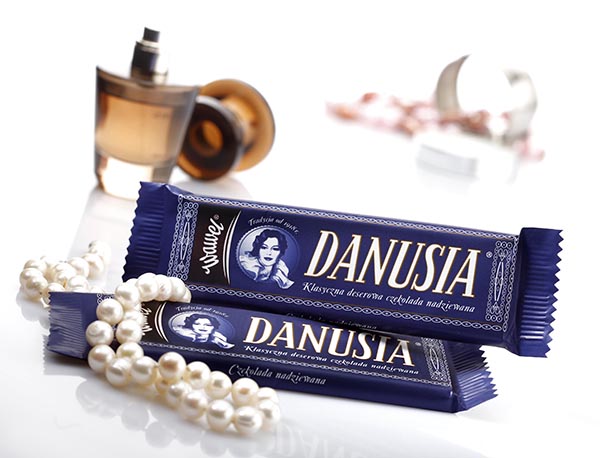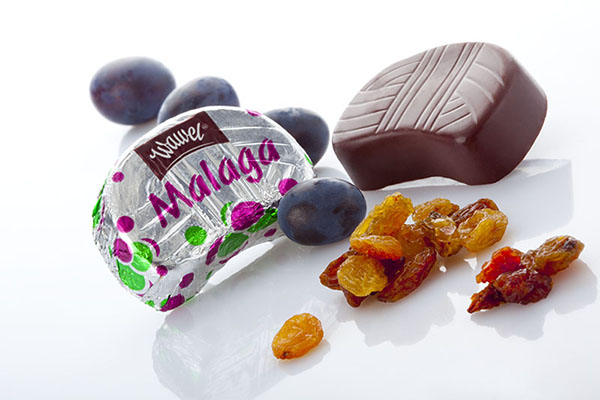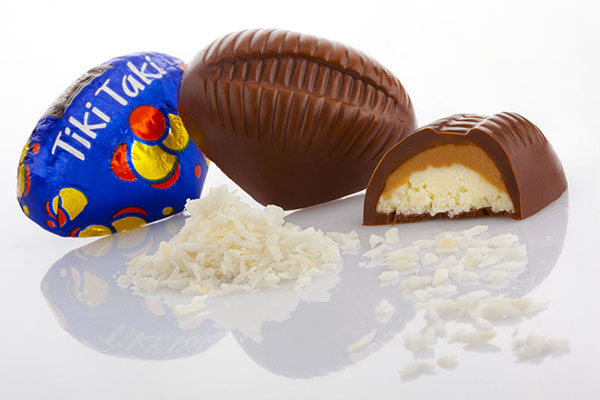Beginning
In 1898, right after he had passed the exam, Adam Piasecki set up a confectionery company. At first, his small workshop at Długa Street would employ 5 people. Yet, exceptional popularity and increasing fame of his products encouraged Mr Piasecki to start a manufacture in 1910. His first shop was opened in a tenement house at the Main Square in Cracow. Today, there is still a shop in this area.
The year 1951 brought changes, as three confectionery companies from Cracow merged then: Fabryka Wyrobów Czekoladowych Pischinger (Pischinger Manufacture of Chocolate Products), Fabryka Czekolady Suchard (Suchard Chocolate Manufacture) and Fabryka Wawel (Wawel Manufacture). The new company was called Zakłady Przemysłu Cukierniczego Wawel (Wawel Confectionery Plant). This was the beginning of the Wawel brand, which offers a combination of Polish and Swiss recipes and the chocolate craft perfected for many years.
Nowadays
In 1992, as a result of privatisation, Zakłady Przemysłu Cukierniczego Wawel has become a joint stock company. The shares of ZPC Wawel SA debuted on the prime market of the Warsaw Stock Exchange on 11 March 1998. In 2005, the company changed its name to Wawel SA. Until 2006, Wawel manufactured its products in three specialised plants in Cracow. In 2006, a new facility in Dobczyce (near Cracow) was opened, and the production was moved there. Increasing the power and improving the production technology will let the company grow faster than the market, which develops at the pace of 5-6 per cent per year. The newly-built plant complies with the safety and quality requirements for food production specified by ISO 9001.
Wawel SA is famous for the sweets made of top-quality ingredients and offering a distinctive taste. Thanks to the unique recipe, everyone can enjoy the flavour of chocolate in any form: from liquid cocoa, to chocolates and bars with delicate filling. The wide range of products offered by Wawel will satisfy even the pickiest sweet tooth. Regardless of age, address or political views, just reach for the sweet pleasure and taste the passion and tradition closed in a piece of exceptional chocolate.
Thanks to its presence at international fairs, the Wawel company is recognized by a growing number of consumers. The quality of products and service is great asset when it comes to entering new markets. Constant growth of export results from the development of the chocolate market and good commercial policy of the company. Wawel SA is a perfect example of the importance of timely preparation and active participation in gaining foreign markets.
You need to offer high-quality products which will be interesting for consumers from various countries. Wawel sweets are not only about exotic countries and new markets, but first of all a great example of Polish quality which is getting appreciated around the world. It is reflected in a constant growth of orders. Our products are also popular among Poles living in other countries, who can enjoy the Polish taste, although in general it is not easy to find food products from Poland abroad. – says Export Director of Wawel, Mr Tomasz Kuszewski.
Cracow citizens are not the only ones who are delighted with Wawel sweets. The fame of these exceptional chocolate products has spread all around Poland. Apart from the home market, products of Wawel SA are available on five continents today: Europe, Asia, North America, Australia and Africa.
Signature sweets of Wawel
Malaga, whose story starts in late 1960s, is the first type of chocolates from this great series. They used to be hand-formed. It is easy to guess that their name is of Spanish origin, but it refers to sweet vine, not to the name of the province. Malaga chocolates offer the ideal combination of classic plain chocolate with half-liquid creamy filling with sun-dried raisins.
Kasztanki have conquered the Polish market in the 1970s – consumers fell in love with these chocolates almost immediately. They are loved by people of all ages. Delicate plain chocolate hides cocoa filling with crunchy wafer pieces. The recipe has not changed since the beginning. The name Kasztanki (chestnuts) comes from the shape – although they resemble shells, some people claim that they look like chestnuts. The form of Kasztanki has been patented and it can be used only by Wawel SA.
Tiki Taki are the last (but not least) member of the famous chocolate trio. The name comes from a popular toy. Two balls on the string which used to excite kids so much have inspired the name of this sweet. Tiki Taki were first produced in the 1970s. The ear-catching name which evokes very positive associations was combined with a sophisticated taste – two layers of nougat and coconut filling are wrapped with delicious chocolate here.
Hand-made Karmelki (candies) have been manufactured with the use of the traditional method for years, thanks to which their shape and taste is so special. Delicious praline filling with thin threads of caramel is formed by hand, so Raczki and Kukułki delight everyone with their delicate crunchiness and distinctive Wawel stripes.
Taste Danusia!
Danusia chocolate bars are a symbol of Adam Piasecki’s (the company owner) love to his pretty employee. Charmed with Danusia’s beauty, the confectionery master developed in the early 1920s a recipe for a chocolate bar in an attempt to prove his immense love for her. He obtained the elegant and sophisticated shape and unforgettable taste of the Danusia bar thanks to the special production line which he imported from Italy. Danusia still delights us with its great taste, and the crowd of its enthusiasts has been systematically growing.
For more information about the company and its sweet products, visit www.wawel.com.pl





